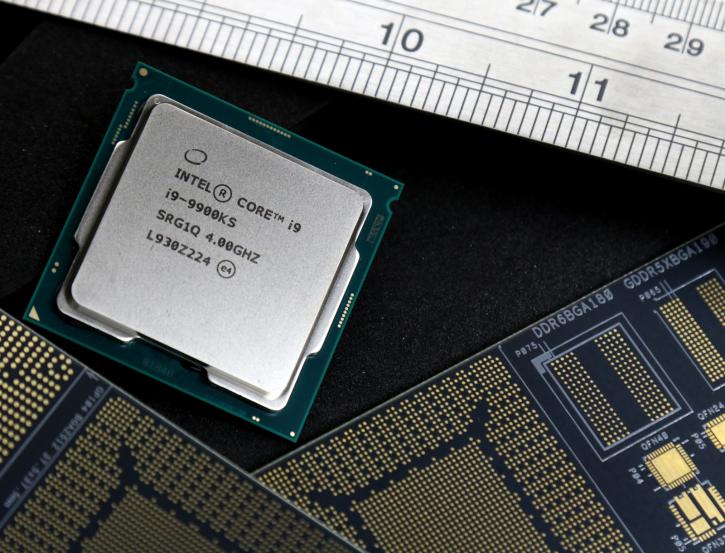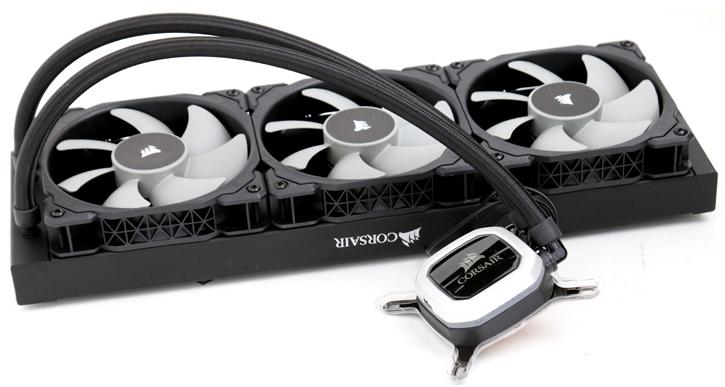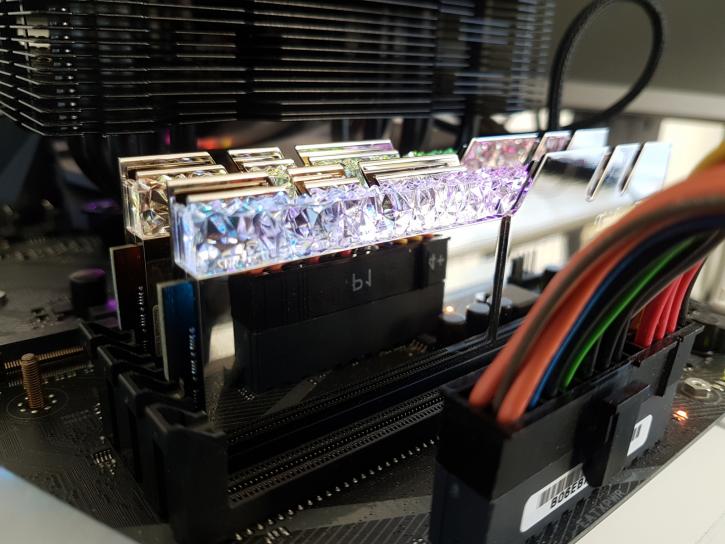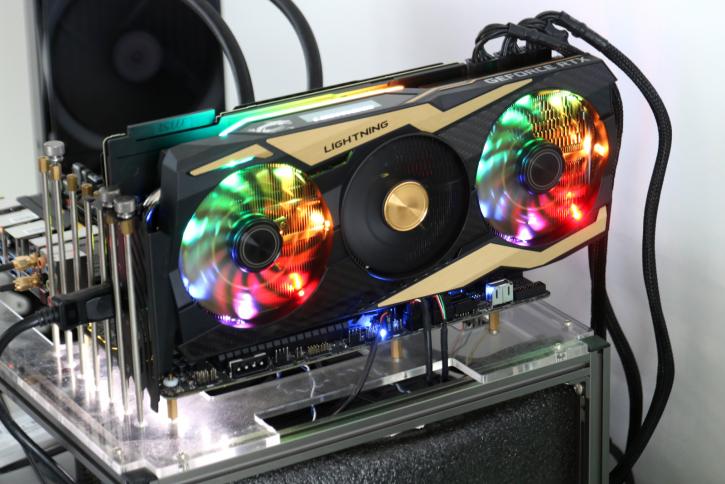An Overkill Build
An Overkill Build
Here we are, everyone. The endgame. This PC is aimed at 1440p high-refresh gaming at the least, or 4k gaming in excess of 60fps. Remember, the focus of this build is gaming, pure and simple. It just so happens that CPUs like Intel and AMD's high end offerings can also function as entirely capable entry-level workstations... or, actually, really not so entry-level. The amount of horsepower you can get on mainstream systems in 2020 is truly astonishing.
The rule of thumb here is: The ‘Price = No Object’ Build - $ yes, a lot.
CPU - Intel Core i9 9900K or KS
As we are seeking gaming performance, here, the 3900X and 3950X – whilst being exceptional processors – are $500 and $750 respectively. With the 9900k being around the same price as the 3900X, it will also provide superior frame rates, especially when overclocked.
For maximum performance with the highest end GPUs available, the 9900KS should be the processor of choice. You get 8C/16T at a guaranteed all-core 5GHz boost clock. However, as of 13/04/2020, the 9900KS is impossible to find for its regular MSRP, so our recommendation would be to buy the regular 9900k or await Intel’s 10th Generation CPU release. Intel’s ‘regular’ 9900k will certainly provide a premium experience, and with appropriate cooling an overclock to that magical 5Ghz barrier should be more than attainable, silicon lottery allowing.
What about if you just wanted the latest from AMD, here, and didn’t mind losing some gaming performance? Well, that is your call, and the 3900X/3950X are exceptional processors. The technology world has received them well for a reason, and plenty of people have paired them with the best consumer GPU money can buy, aka. the 2080Ti. With that said, I would not be doing my job, here, if I recommended people buy the R9 chips over the 9900k if they cost the same (or more) and provided worse performance, even if it is by a relatively narrow margin in numerous cases.
Furthermore, the 3900X and 3950X really find their home in the ‘entry-level’ of workstations, with the 16 core 3950X managing to win (in some areas) against Intel’s ‘best of the best’ 18 core 10980XE.
Motherboard - MSI MEG Z390 ACE or Gigabyte Z390 Aorus Master
You can find the review for the MSI board here, and the Gigabyte board here. It’s no secret that you can spend a ludicrous amount of money on Z390 motherboards (remember, this is a consumer chipset with consumer features, e.g. gigabit Ethernet only, dual-channel RAM, etc.), and whilst this is the ‘Price No Object’ build, I am not in the habit of recommending that our readers simply burn money on motherboards for the sake of pointless posturing. You can read our review of the board here, but suffice to say we really liked this product. It has an robust VRM (helpful considering the CPU we will be using), great build quality, good looks, the ALC1220 audio codec, and 3x M.2 slots. We noted that the BIOS does need some work, but when you remember how easy overclocking of Intel CPUs is, this will not pose a problem.
Other motherboards in the 250-300 USD price range do exist, and that we know, but we keep coming back to the Aorus Master (as it was my recommendation in the previous edition of this guide, as well) thanks to the above feature set and competitive price.
CPU Cooler... um, really big?
Without wishing to flog a very, very deceased horse, by now, Intel’s 9th CPUs run relatively hot at stock settings. When overclocked, thermals can often run wild. We can, therefore, only recommend large all-in-one (AIO) water coolers for this PC. Again, we direct you again to our CPU cooler review page (here). 240mm should you be a minimum size, with 280mm being the better option. The good news is, however, that a decent variety of mid-tower ATX cases in 2020 offer 360mm radiator support.
The final (and perhaps most obvious choice for overkill builds like this one) is a fully custom loop. Here, the sky is the limit, but it can result in, A) Some very impressive thermals and, B) the ability to really make your PC your own. Want to go full on RGB vomit? Go ahead. Want to have a go at a black/chrome theme with rigid tubing? Again, go for it.
RAM – 32GB DDR4, 3600Mhz CL16 (or better)
32GB of RAM is not needed, still, and 16GB of 3600Mhz CL16 (or better) RAM will prove more than enough for a gaming system. That said, RAM is reasonably priced in 2020, and getting 32GB of DDR4 will assure that you can leave whatever you like open in the background whilst you game. There are no specific recommendations, here, as one can find all varieties of RAM kits on the market nowadays.
Plain and simple kits with little to no flair, or highly gaudy ‘rainbow vomit’ modules that light up in a variety of eye-catching colours. It’s absolutely your pick, and the maturity of Intel’s 14nm node and integrated memory controller will mean practically any kit will work at its rated XMP profile, though your mileage beyond the likes of 3600-3733Mhz will certainly vary.
Storage – Western Digital SN750 or Samsung 970 EVO/Pro
Your budget here should allow for at least a single 2TB NVMe drive, and after that, it is really up to you. Our recommendations go to the above two drives, the latter of which has seen its cheaper cousin referenced before. The Western Digital SN750, however, has not been talked of so far. It is, however, an exceptional example of M.2 storage and received strong accolades elsewhere in the tech press. I feel that unless you need bulk storage, your only form of storing data on this caliber of PC should be in the form of additional SSDs, either M.2 or the more traditional 2.5’’ drives.
Power Supply
With an overclocked 2080Ti and 9900k, this system is capable of pulling around 500W from the wall. Therefore, we recommend at least a 750W PSU for this build, and up to 850W. We have listed some PSU models for your consideration below:
- Seasonic Prime Ultra 750W Platinum;
- Corsair ‘RM’ (2019) 750W (80+ Gold);
- Silverstone Strider Platinum (750W).
If you intend to utilize a dual-GPU setup, then we suggest increasing the PSUs capacity to 1000W. As for a case… realistically, go for whatever you want! Price is no object, here, and aside from cooling considerations regarding the AIO radiator, the world is your oyster. With that, we come to the end of the Easter 2020 Guru3D PC buyers guide. I hope you have enjoyed it as much I as have done writing it, and I really do enjoy writing them.
GPU – Nvidia RTX 2080Ti
Price vs. performance aside, the 2080Ti is the fastest consumer GPU available in 2020. Our recommendation goes to MSI’s ‘Gaming X Trio’, (review here), and special mention must also go to Asus’ ‘Strix’ 2080Ti (review here). Want to spend even more? Well, combine 2 of these monsters for a dual-GPU gaming experience, though bear in mind all of the pitfalls this brings, namely:
- A further c. $1,200 in costs;
- Additional and significant power requirements;
- Additional heat output (into your room).
If you intend to utilize a dual-GPU setup, then we suggest increasing the PSU capacity to 1000W. As for a case… realistically, go for whatever you want! Price is no object, here, and aside from cooling considerations regarding the AIO radiator, the world is your oyster.






